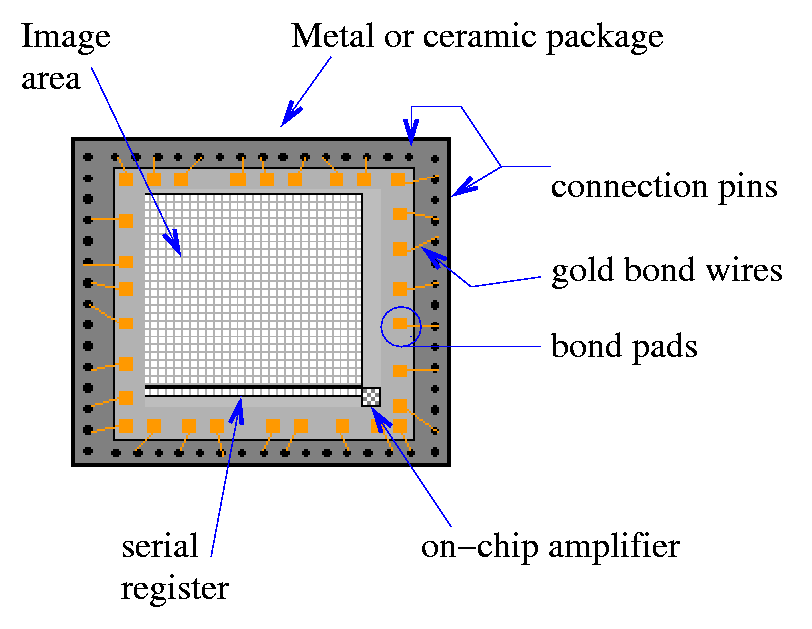
 Copyright © Michael Richmond.
This work is licensed under a Creative Commons License.
Copyright © Michael Richmond.
This work is licensed under a Creative Commons License.
There's one more source of noise inherent in all CCDs, which is especially important for images with short exposures and/or very faint background levels. This is the readout noise, sometimes abbreviated "readnoise".
It is a consequence of the imperfect operation of physical electronic devices. Recall the order of operations the CCD performs to turn the electrons knocked free by photons in every pixel into a signal which can be read by a computer:
Readout noise occurs in step 2: the measurement of a very small packet of charge by the readout amplifier.

The amplifier can't do a perfect job of measuring the charge in the clump of electrons. Typically, it gives the right value on average, but with some random scatter. "Readout noise" is simply a measure of this scatter around the true value. People usually quote its value in electrons, because, after all, the packet of charge is made up of electrons.
How can we determine this value? A simple -- but approximate way -- is to look at a frame which ought to have the same pixel value everywhere. Suppose that we could magically illuminate the CCD with, say, exactly 100 photons in every pixel. All pixel values ought to be identical, so any differences between pixels might be blamed on random fluctuations in the readout amplifier.
Okay, so uniform illumination isn't very practical. How about uniform darkness instead? If we take a dark frame of zero exposure time (sometimes called "zero frames", sometimes called "bias frames"), then there will be
In theory, in an ideal world, two such "zero frames" ought to be identical. If we subtract one from the other, we ought to get exactly zero counts, everywhere. Try it!
The standard deviation of this difference image is a result of random scatter in the first image copyA.fit AND random scatter in the second image copyB.fit. In order to find the standard deviation in a single zero frame, we need to divide the stdev of the difference image by the square root of two:
stdev of diff image
stdev of one image = ---------------------
sqrt(2)
This yields the readout noise of the CCD in units of counts. What we really want to know is the readout noise in electrons.
Okay, so now you know about the three main sources of random scatter in CCD pixel values:
We can put these sources together into a single equation to calculate the overall uncertainty in the number of electrons in a single pixel:
variance (electrons) = (readout noise)*(readout noise) +
(number of thermal-electrons) +
(number of photo-electrons)
Or, in terms of the standard deviation we can expect to see
in repeated measurements,
stdev (electrons) = sqrt (variance)
= sqrt [ (readout noise*readout noise) +
(number of thermal-electrons) +
(number of photo-electrons) ]
People often abbreviate these quantities like so:
R = readout noise (sqrt of number of electrons)
D = "dark current", number of thermal electrons
P = total number of photo-electrons knocked free
In which case the equation for stdev, in electrons, becomes
stdev (electrons) = sqrt ( R*R + D + P )
Notice that the readnoise noise R term is squared, simply because people have customarily used the standard deviation of the readnoise as the quoted quantity, rather than the number of readout electrons themselves.
Exercises
 Copyright © Michael Richmond.
This work is licensed under a Creative Commons License.
Copyright © Michael Richmond.
This work is licensed under a Creative Commons License.